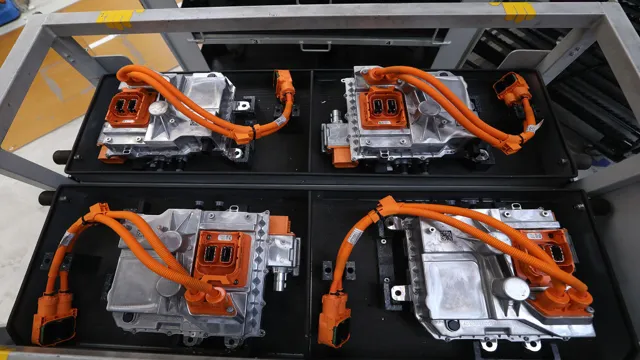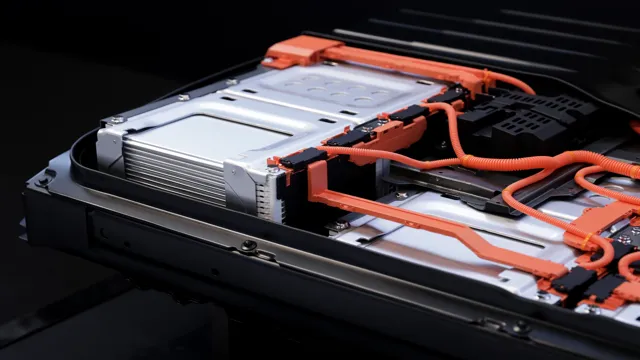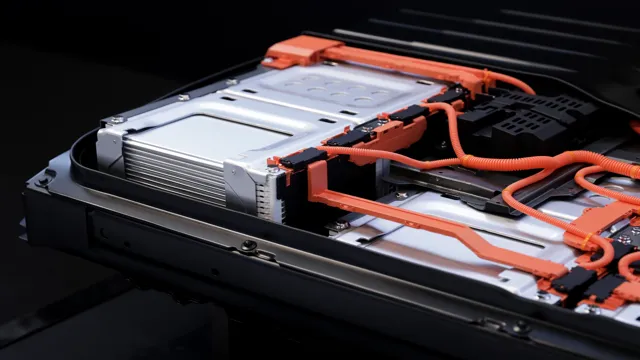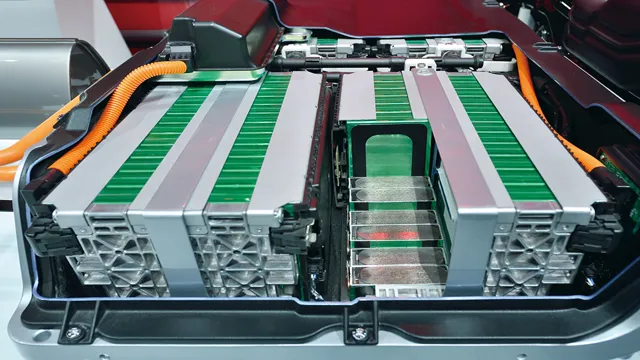Unleashing the Power: The Surprising Benefits of Battery Volume in Electric Cars
Electric cars are becoming increasingly popular as more buyers prioritize eco-friendliness and efficiency. However, there is one crucial feature that often confuses potential buyers: battery volume. What is it, and why is it so important? Battery volume refers to the size of the electric car’s battery pack, which in turn determines its range or how far it can travel on a single charge.
The bigger the battery pack, the longer the range. This is crucial for those who need their car for daily commutes or long road trips. However, larger battery packs also mean heavier cars, which can affect performance and handling.
The type of battery used can also affect not just the range but also the price, safety, and environmental impact of the vehicle. So, how do you determine the right battery volume for your needs? It depends on your driving habits and priorities. If you tend to take short trips, a smaller battery pack might suffice.
If you frequently drive long distances, a larger battery pack might be more suitable. It’s essential to consider all factors, including cost and weight, when making a decision. In this article, we’ll dive deeper into the world of battery volume in electric cars and equip you with all the knowledge you need to make an informed decision when purchasing an electric vehicle.
Understanding Battery Capacity
As electric vehicles become more common, battery volume is a crucial factor that affects their driving range and performance. Battery capacity is typically measured in kilowatt-hours (kWh), which represents the amount of energy that can be stored and used by the car’s electric motor. A higher battery capacity generally means a longer driving range, but it can also increase the overall weight and cost of the vehicle.
Moreover, battery volume can also degrade over time due to factors such as temperature, usage patterns, and battery chemistry. This means that it’s crucial for electric car owners to monitor their battery health and plan their driving accordingly to avoid being stranded without a charge. Overall, battery volume is an essential consideration when buying an electric car, and it’s essential to understand how it can impact your driving experience.
Capacity vs Range
Battery capacity and range are two different aspects to consider when it comes to batteries, especially for electric vehicles. Capacity refers to the amount of energy a battery can store, while range refers to how far a vehicle can travel on a single charge. In simpler terms, capacity determines how long a battery can last, while range determines how far it can take you.
Understanding battery capacity is crucial because it affects the performance and functionality of the device that utilizes it. The higher the capacity, the more energy a battery can store, and the longer the device can run. Conversely, the lower the capacity, the quicker a battery will discharge and need to be recharged.
Despite range being the ultimate goal of battery usage, capacity plays a significant role in the overall performance of the device. For instance, a device with high capacity can perform better as it can retain energy for longer periods without necessarily having to recharge frequently. Overall, battery capacity is an essential factor to consider when choosing a battery or device that utilizes a battery.
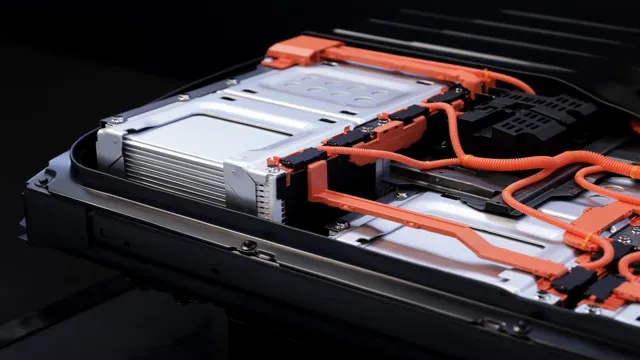
Battery Voltage and Amp-Hours
Understanding Battery Capacity When it comes to batteries, it’s important to understand how capacity works. Battery capacity is measured in amp-hours (Ah), which represents the amount of charge a battery can hold and deliver. Essentially, the higher the Ah rating, the longer the battery will last.
On the other hand, voltage represents the strength of the battery’s power output. While increasing the voltage won’t increase the battery’s overall capacity, it can increase the power output for certain devices. It’s important to keep in mind that voltage and capacity are two separate factors that are equally important when choosing the right battery for your needs.
A battery with a higher voltage rating may seem like the better choice, but if the capacity is too low, it may not last as long as you need it to. Similarly, a battery with a high capacity may be great for long-term use, but if the voltage is too low, it may not be powerful enough for certain devices. So, before purchasing a battery, make sure to consider both voltage and capacity to find the perfect match for your needs.
Factors Affecting Battery Life
Battery volume is a significant factor affecting the battery life of electric cars. The larger the battery volume, the longer the car can travel without requiring a recharge. However, it’s crucial to understand that battery volume is not the only factor affecting battery life.
The way the car is driven, the amount of weight it carries, and the outside temperature all play a role. For instance, driving the car faster or carrying heavier loads can deplete the battery faster. Similarly, extremely hot or cold temperatures can also negatively affect the battery’s performance.
It’s essential to consider multiple factors to maximize the battery life of an electric car. That way, you can enjoy longer journeys without worrying about frequent recharges. With the continuous development of battery technology, car manufacturers are increasing the range of their electric vehicles, making them more practical, and convenient for everyday use.
As demand for electric cars increases, it is important to remain conscious of the factors that affect battery life to make informed decisions.
Temperature, Fast Charging, and Depth of Discharge
Battery life is affected by various factors, including temperature, fast charging, and depth of discharge. High temperatures have a negative impact on battery health and lifespan, as they cause faster degradation and internal damage. It’s essential to store and use your battery in temperatures within the recommended range to maximize its life.
Rapid charging also puts stress on the battery and can lead to quicker aging and reduced capacity over time. It’s better to opt for slower but safer charging methods whenever possible. Depth of discharge, or how much the battery is depleted before recharging, can also influence its lifespan.
Frequent deep discharges put extra stress on the battery and decrease its overall health. It’s best to avoid completely draining your battery regularly and instead, aim for shallow discharges. By keeping these factors in mind, you can extend the life of your battery and ensure it works optimally for as long as possible.
Impact of Driving Style and Environment on Battery
The life of a car battery can be affected by a variety of factors, including driving style and environment. Aggressive driving, such as fast acceleration and sudden stops, can lead to a shorter battery life as it puts a strain on the battery’s charging system. Similarly, extreme temperatures, especially hot temperatures, can cause the battery to age more rapidly.
This is because high heat can evaporate the battery’s fluids, causing internal damage. On the other hand, mild temperatures are best for battery life. It’s also important to note that certain electric vehicle features, such as air conditioning or high-powered sound systems, can reduce the battery life if used frequently.
So, when it comes to taking care of your car’s battery, it’s important to keep in mind how you drive and the environment in which you drive. Regular maintenance, such as checking the battery terminals for rust and corrosion and keeping the battery charged, can also help extend the life of your battery.
Maintenance Tips for Maximizing Battery Life
Battery life is an essential aspect of our electronic devices, and taking proper care of them can help us get the most out of them. There are several factors that affect battery life, including the type of battery, the number of charge cycles, temperature, and the use of power-hungry apps. Lithium-ion batteries, which are commonly used in smartphones and laptops, have a limited lifespan, and overcharging or exposing them to extreme temperatures can reduce their capacity over time.
Additionally, the more charge cycles a battery goes through, the quicker it deteriorates. High temperatures can also cause a battery to degrade faster, and power-hungry apps can drain the battery quickly. To maximize battery life, it is essential to keep your device in a cool and dry environment, avoid overcharging, and limit the use of resource-intensive apps.
By taking these simple steps, you can prolong the life of your battery and ensure that your device lasts longer.
Comparing Battery Volume in Popular Electric Cars
When it comes to electric cars, battery volume is a crucial factor in determining range and performance. The Tesla Model S currently holds the crown for the largest battery volume with an impressive 100 kWh, providing a range of over 300 miles on a single charge. However, the Chevrolet Bolt EV comes in a close second with a 66 kWh battery, allowing for a range of up to 259 miles.
The Nissan Leaf and BMW i3 also offer respectable battery volumes of 40 kWh and 42 kWh, respectively. While battery volume may not be the only consideration when choosing an electric car, it certainly plays a significant role in determining its capabilities and overall value.
Tesla Model S vs Nissan Leaf vs Chevy Bolt
When it comes to electric cars, the battery volume is a crucial factor in determining their range and performance. The three most popular electric cars in the market today are the Tesla Model S, Nissan Leaf, and Chevy Bolt. In terms of battery volume, the Tesla Model S takes the lead with a whopping 100 kWh battery pack, allowing it to travel up to 402 miles on a single charge.
The Nissan Leaf, on the other hand, has a 40 kWh battery pack, which grants it a range of around 150 miles per charge. The Chevy Bolt, standing somewhere in the middle with a 60 kWh battery pack, has a range of 259 miles on a full charge. It is clear that battery volume plays a significant role in the range of electric cars, but it is not the only contributing factor.
Other factors such as the weight of the car, driving habits, and weather conditions also play a role in determining the actual range of the car. Nonetheless, a higher battery volume generally translates to a longer and more powerful driving experience for the driver.
Range Anxiety and Overcoming It
As electric cars are growing in popularity, so does the issue of range anxiety. Drivers are worried about running out of battery power before they reach their destination. Fortunately, car manufacturers are constantly improving their technology and offering longer driving ranges.
Let’s compare some of the popular electric cars’ battery volumes to see how far they can go. The Tesla Model S, with a 100 kWh battery pack, can drive around 375 miles on a single charge, making it one of the most impressive electric cars on the market. In comparison, the Nissan Leaf, with a 40 kWh battery, can travel around 150 miles on a single charge, while the Chevy Bolt, with a 66 kWh battery, can go around 259 miles.
It’s important to note that these driving range estimates can vary depending on weather, driving conditions, and driving habits. Ultimately, the key to overcoming range anxiety is planning ahead and using the available resources such as charging stations along the way. With better battery technology and infrastructure, range anxiety will become a thing of the past, paving the way for a greener and more sustainable future.
Battery Technology Innovations on the Horizon
Battery technology innovations are paving the way for a new era in electric vehicles. As more consumers make the switch to eco-friendly modes of transportation, the need for improved battery capacity and efficiency becomes increasingly important. New battery designs are being developed that allow for higher energy density, meaning more power can be packed into a smaller volume.
This is great news for electric car owners, as it means longer driving ranges and less frequent charging. Additionally, materials such as solid-state lithium batteries and graphene-enhanced anodes are showing promise in improving battery lifespan and reducing charging times. With these advancements, we may soon see electric cars with battery volumes comparable to those of traditional gas-powered vehicles, making the switch to sustainable transportation even more appealing.
Conclusion
In conclusion, when it comes to battery volume in electric cars, it all boils down to one simple principle: the bigger the battery, the farther you can go. While it may sound like common sense, the reality is that battery technology is constantly evolving, and what was once considered a large battery may now be considered average. As we continue to push the boundaries of electric vehicles, it’s safe to say that the future is looking bright – and with it, the ever-increasing volume of batteries powering our cars.
“
FAQs
What is the battery capacity of an electric car?
The battery capacity of an electric car varies depending on the make and model, with some batteries ranging from 24 kWh up to 100 kWh or more.
Can you upgrade the battery volume on an electric car?
While some electric car manufacturers offer upgraded battery packs, not all do. It’s important to research the specific make and model to see if this is possible.
How long does it take to charge the battery on an electric car?
The charging time for an electric car battery depends on the type of charger being used, with some charging stations able to charge a battery to 80% in 30 minutes or less.
How often does the battery need to be replaced in an electric car?
The lifespan of an electric car battery can vary depending on usage, driving habits, and other factors. However, most manufacturers offer a warranty on the battery for a set number of years and/or miles.
